How to Make Buttermilk
Part of my Baking Basics series: This post outlines a few different ways to make your own buttermilk with only two ingredients, different buttermilk substitutes, and how using buttermilk makes a difference in baked goods!
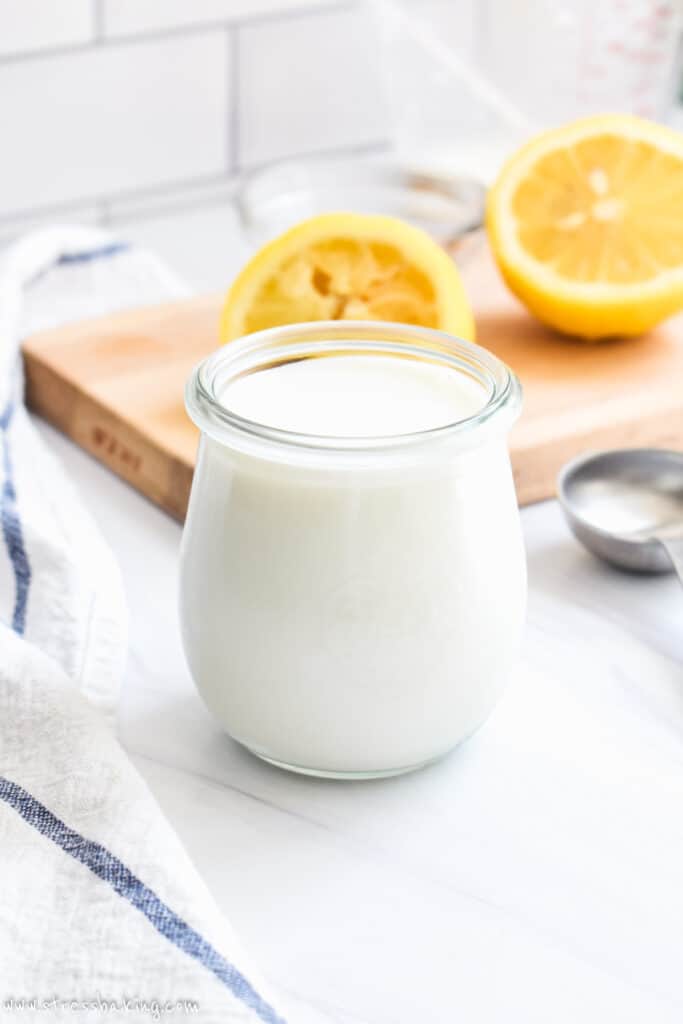
What is buttermilk?
The short answer: a slightly sour, tangy milk that is thicker than regular dairy milk.
The more scientific answer, courtesy of Wikipedia:
“Cultured buttermilk was first commercially introduced in the United States in the 1920s. Commercially available cultured buttermilk is milk that has been pasteurized and homogenized, and then inoculated with a culture of Lactococcus lactis or Lactobacillus bulgaricus plus Leuconostoc citrovorum to simulate the naturally occurring bacteria in the old-fashioned product. The tartness of cultured buttermilk is primarily due to lactic acid produced by lactic acid bacteria while fermenting lactose, the primary sugar in milk.
As the bacteria produce lactic acid, the pH of the milk decreases and casein, the primary milk protein, precipitates, causing the curdling or clabbering of milk. This process makes buttermilk thicker than plain milk. While both traditional and cultured buttermilk contain lactic acid, traditional buttermilk tends to be less viscous, whereas cultured buttermilk is more viscous.“
Why we use buttermilk
When a recipe calls for buttermilk, it's typically because that recipe also calls for baking soda and the combination of those two helps create a tender, light result to your baked goods. And that goes for sweet and savory, alike!
The baking soda helps to balance the acidity in the buttermilk and neutralizes the metallic taste that can come with baking soda.
Cakes, scones, breads and biscuits are some common recipes you'll find calling for buttermilk. Check out a list of some of my favorite recipes that use buttermilk at the bottom of this post!
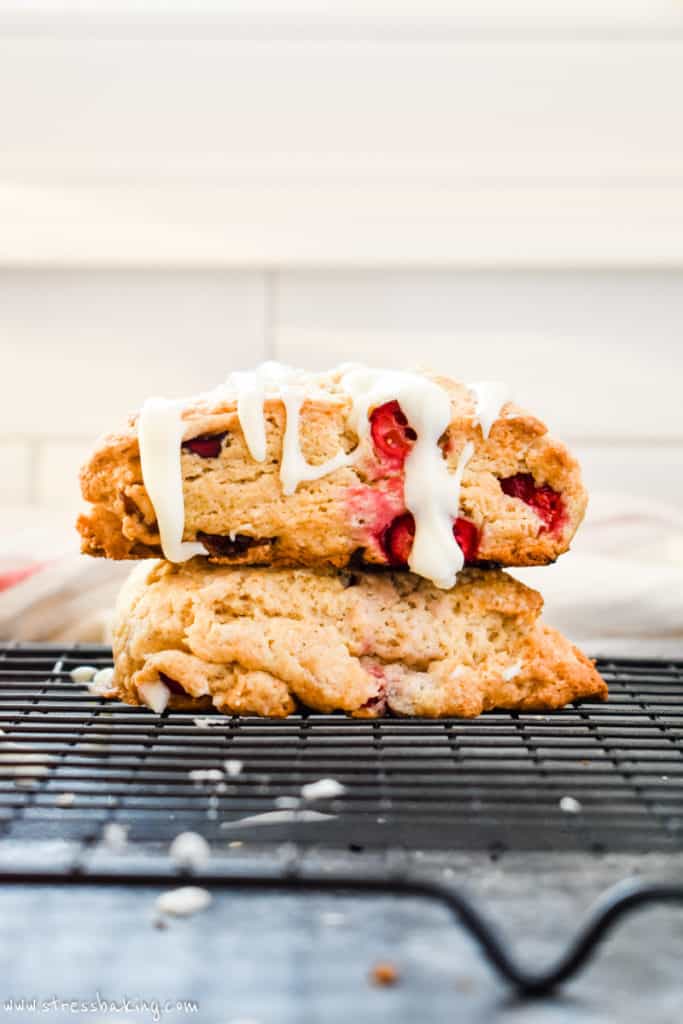
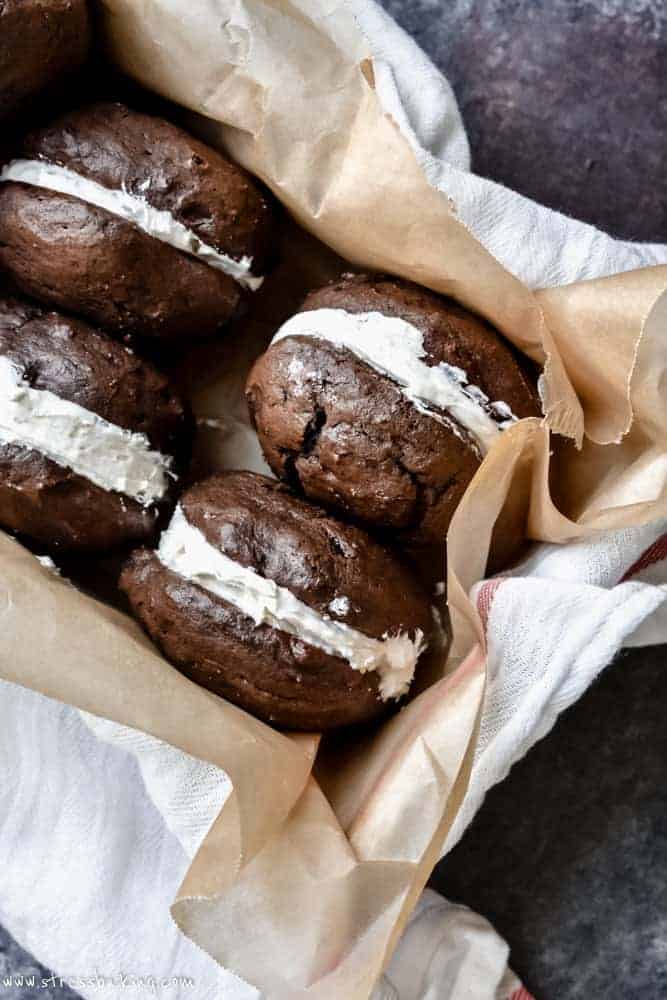

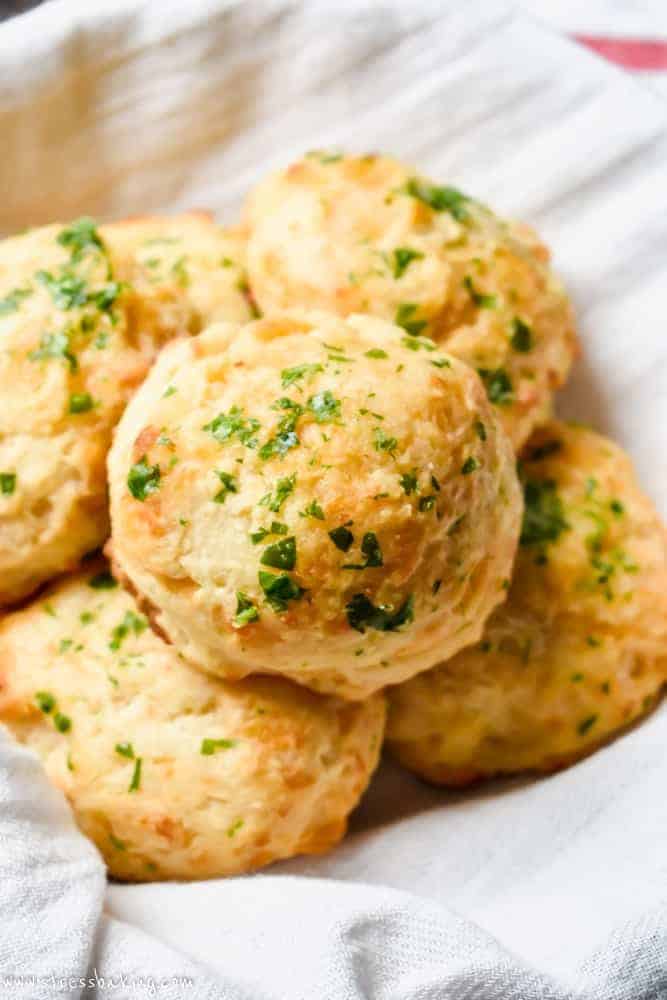
Oh no, I don't have buttermilk!
Don't panic! If you have milk (or non-dairy milk), chances are you also have one of the other ingredients lying around that you can add to it to make your own in just a couple minutes.
Check the kitchen for one of these ingredients:
- lemon juice
- white vinegar
- cream of tartar
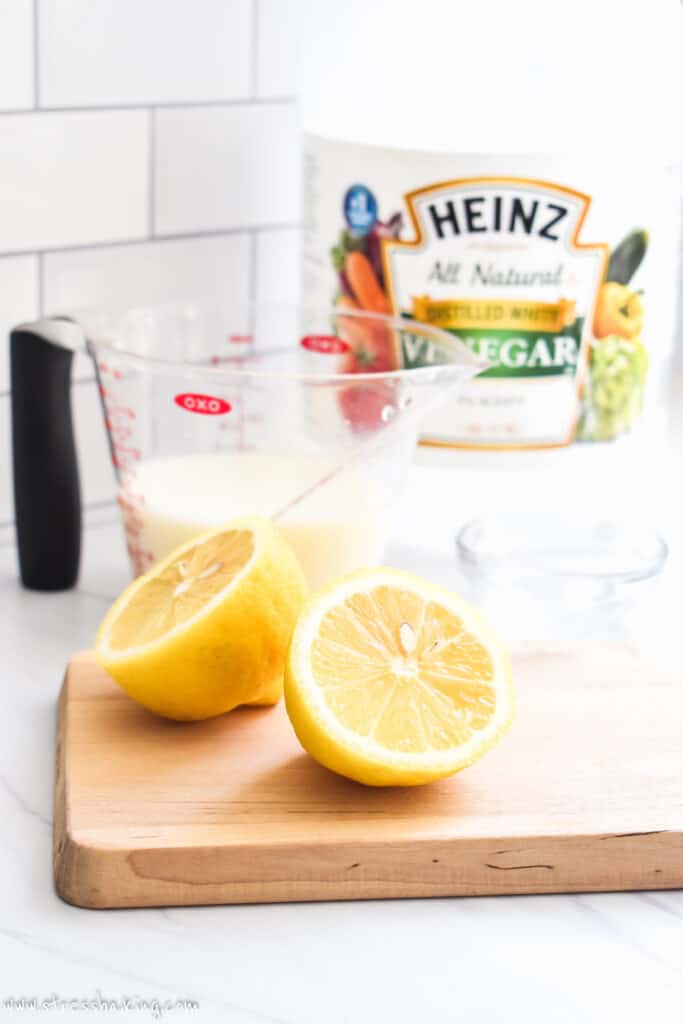
How to make your own buttermilk substitute
Thankfully, this process really couldn't be easier. You're going to measure out one of the following amounts of either lemon juice, vinegar or cream of tartar into a measuring cup, and then just fill it up the rest of the way with milk.
- 1 Tablespoon lemon juice + fill with milk to reach 1 cup = 1 cup buttermilk
- 1 Tablespoon white vinegar + fill with milk to reach 1 cup = 1 cup buttermilk
- 1 3/4 teaspoon cream of tartar + 1 cup milk = 1 cup buttermilk
Now you give it a quick little whisk to combine, and let it set for at least 5 minutes before adding it to your recipe.
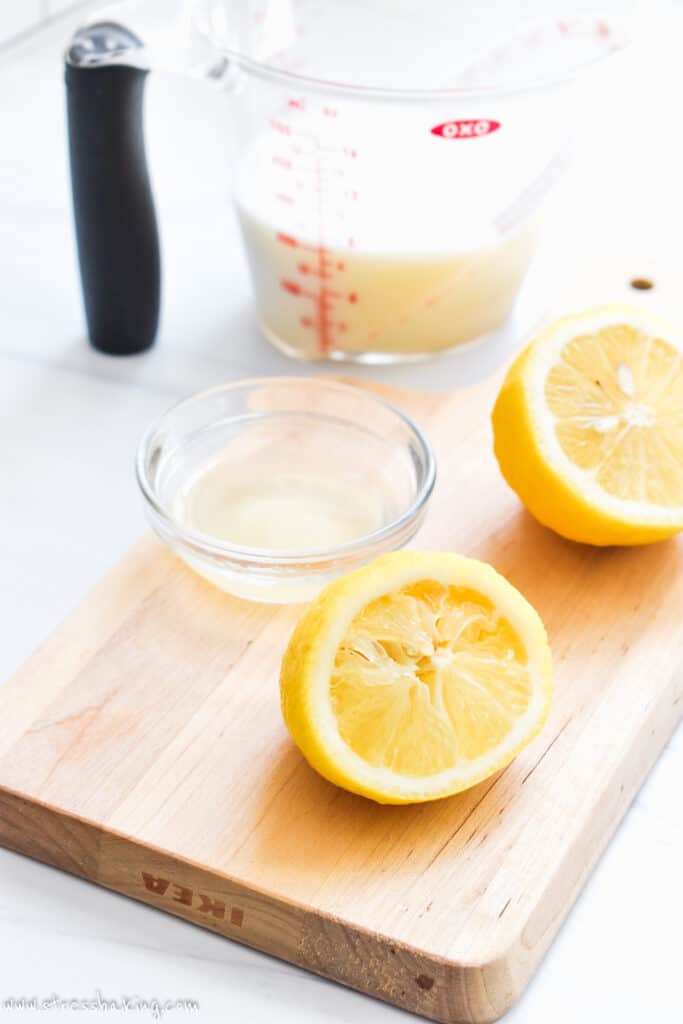
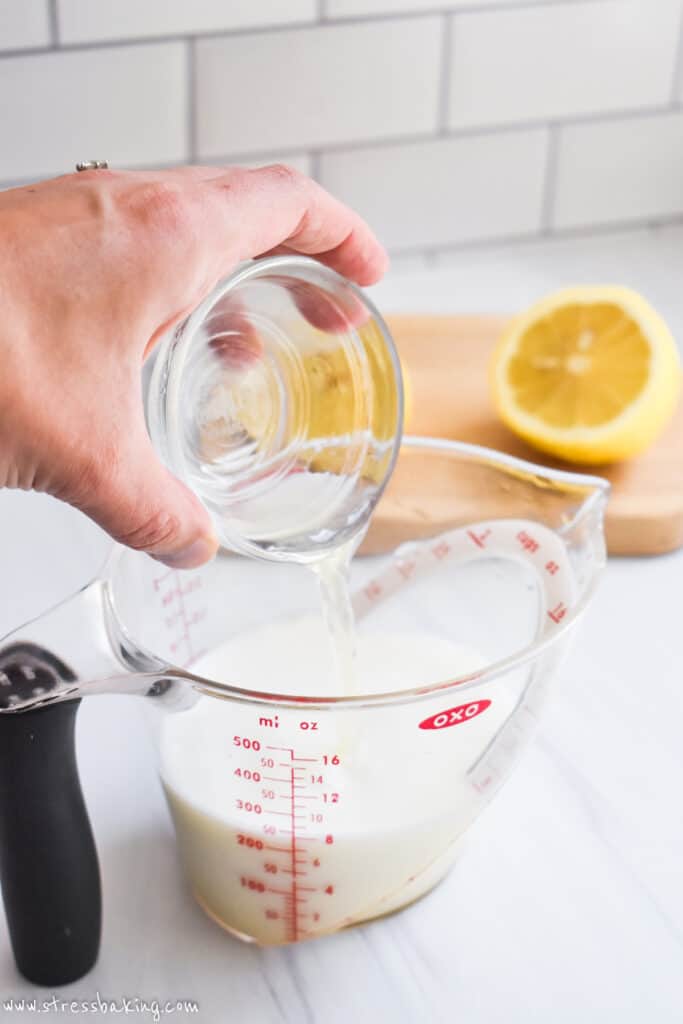
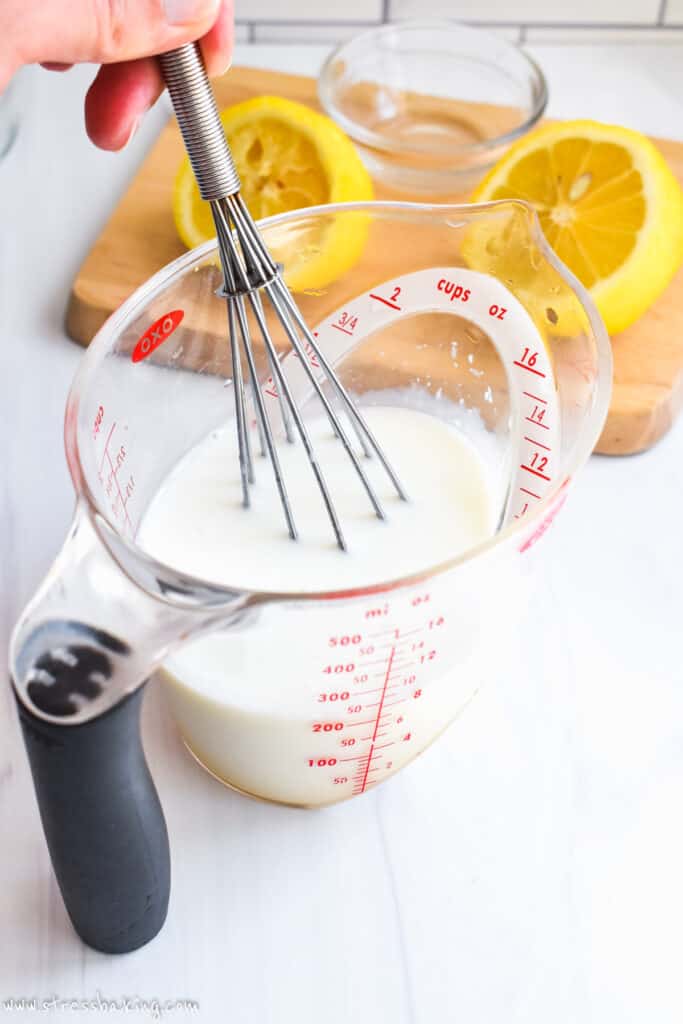
How to make a dairy free buttermilk substitute
Can't have dairy? No problem! Just swap dairy milk for coconut milk, almond milk or soy milk for a dairy free buttermilk substitute.
Note: I haven't personally tried it with macadamia nut milk, hemp milk, cashew milk, oat milk or pistachio milk – but if you have and had success, please comment and let me know!
Okay, but what's powdered buttermilk?
You may have seen containers of powdered buttermilk at the store. It will include instructions on the package to tell you the best way to incorporate it with your recipe, but typically you'll mix a certain amount in with your dry ingredients and then add the appropriate amount of water when the recipe calls for liquid buttermilk.
This involves a little more thought and planning than just swapping in liquid buttermilk, but in my experience works just as well. Just make sure you check the expiration date on the container – you know how I feel about the importance of keeping your pantry clear of expired products ;)
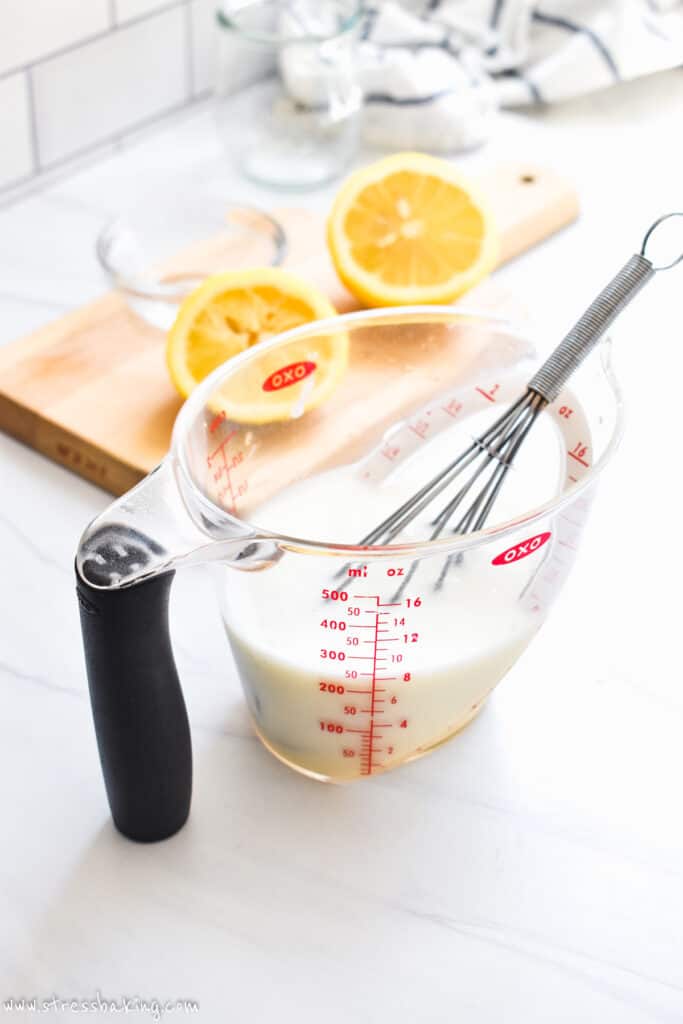
How long does homemade buttermilk last?
As long as you store it in an airtight container in a very cold part of your fridge (i.e.: not the doors, which are the warmest and most often exposed to warmer air), it can last up to two weeks.
If you've ever wondered the best and worst places to store your baking ingredients, check out this post for some helpful tips and information.
How can you tell if buttermilk has gone bad?
You'd think it would be hard to tell when buttermilk has gone bad since it already looks thicker and chunkier and… well, bad!
But really what you'll want to look for is a change in odor – it will be strong and very sour. I've always hated when people use the saying “you'll just know” but it's kinda true!
And also, if it's growing itself some new friends like mold or the color has changed, it's time to say goodbye.
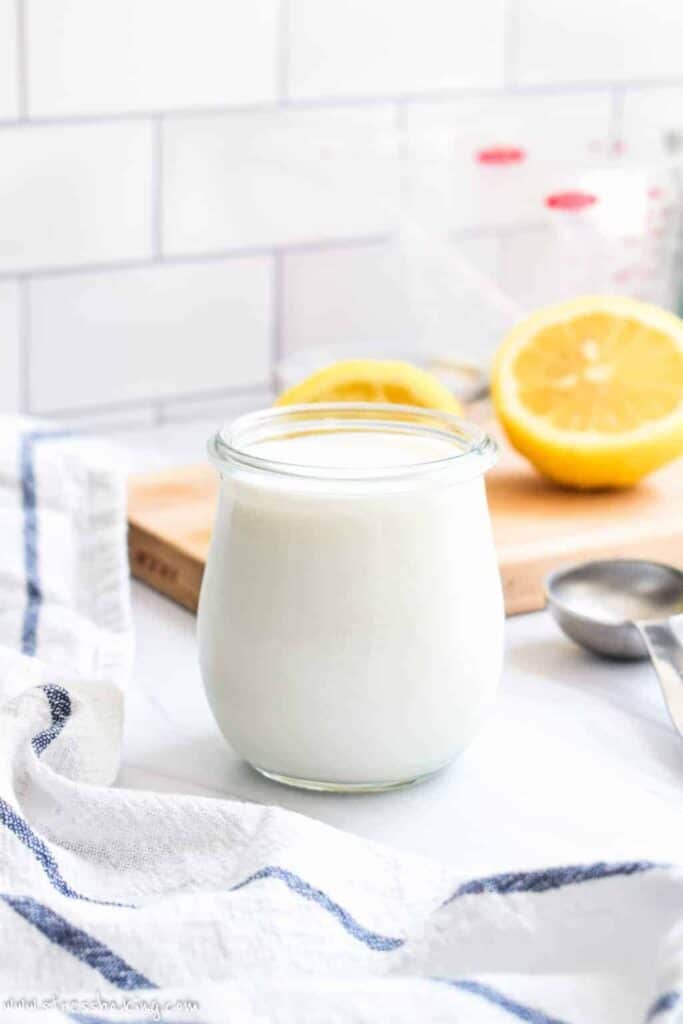
Can I freeze buttermilk?
Absolutely! I tend to make just enough buttermilk for each recipe as I make them, but if you know you're going to need a lot and won't use it up quickly (within the next two weeks), you can store it in a freezer-safe, airtight container in the freezer for up to three months.
Tip: Pour your buttermilk into ice cube trays for easy portions! A standard ice cube tray holds about 1 ounce in each cavity – so if you needed 1 cup of buttermilk for a recipe you would use 8 cube's worth of buttermilk.
How to thaw frozen buttermilk
Take the frozen buttermilk out of the freezer and place it in the fridge the night before you're going to need it.
If you can't plan ahead that much, you can also place the buttermilk in a sealed container or resealable bag and place that bag inside a bowl full of warm water. It will thaw out in less than an hour, but you'll want to switch out the water occasionally as it cools so that it's replenished with warm water.
Recipes that use buttermilk
- The Perfect Banana Bread
- Red Velvet Cupcakes with Cream Cheese Frosting
- Blueberry Muffin Bread
- Chocolate Whoopie Pies
- Cranberry Vanilla Bean Scones
- Red Wine Chocolate Cupcakes with Blackberry Buttercream Frosting
- Rosemary Sea Salt Dinner Rolls
- Copycat Red Lobster Cheddar Bay Biscuits
- Skillet Cornbread
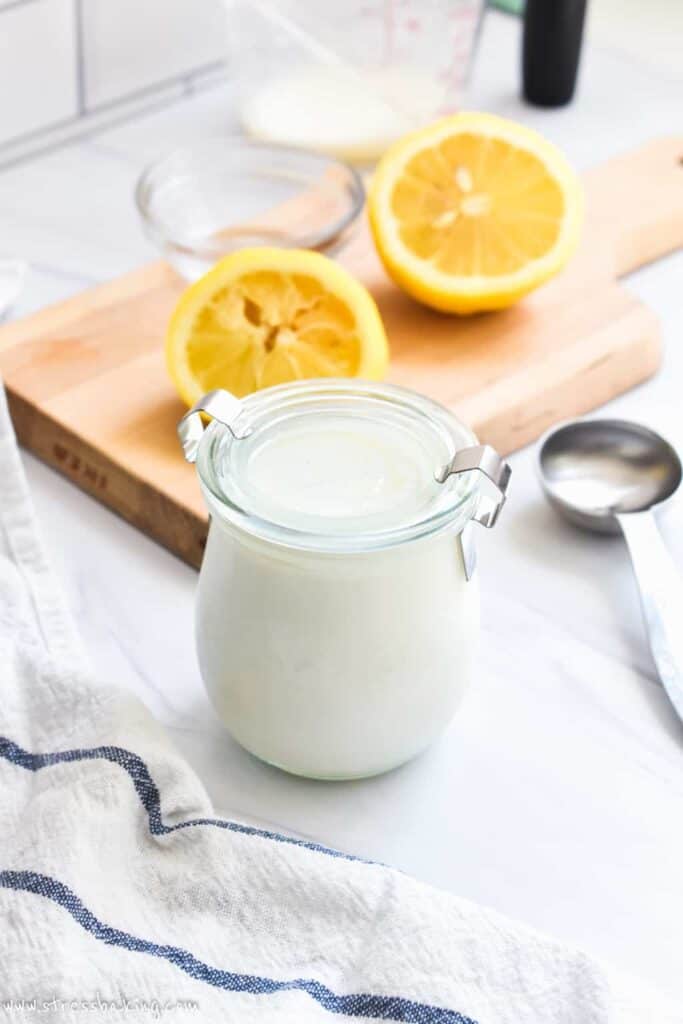

I hope this information helps!
Do you have any questions about this topic that I didn't answer? Let me know in the comments below!
Description
Ingredients
Pick one:
- 1 tablespoon lemon juice, freshly squeezed
- 1 tablespoon white vinegar
- 1 ¾ teaspoon cream of tartar
Milk
- 1 scant cup milk
Instructions
- Add 1 tablespoon lemon juice, white vinegar or cream of tartar to a measuring cup.
- Fill the measuring cup with milk until it reaches 1 cup. Use a small whisk or form to give it a quick stir, then let sit at room temperature for 5 minutes before using it in your recipe.1 scant cup milk
- Store in an airtight container in the fridge for up to 2 weeks.


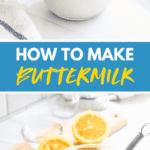
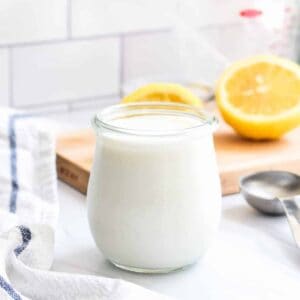
I am an intermediate level baker and just returning to it to save money and I enjoy it!
Great tip on Cream of Tartar instead of lemon juice. thanks.
just looked at it the other day and thought, what would I use that for?
Glad to hear this was helpful!